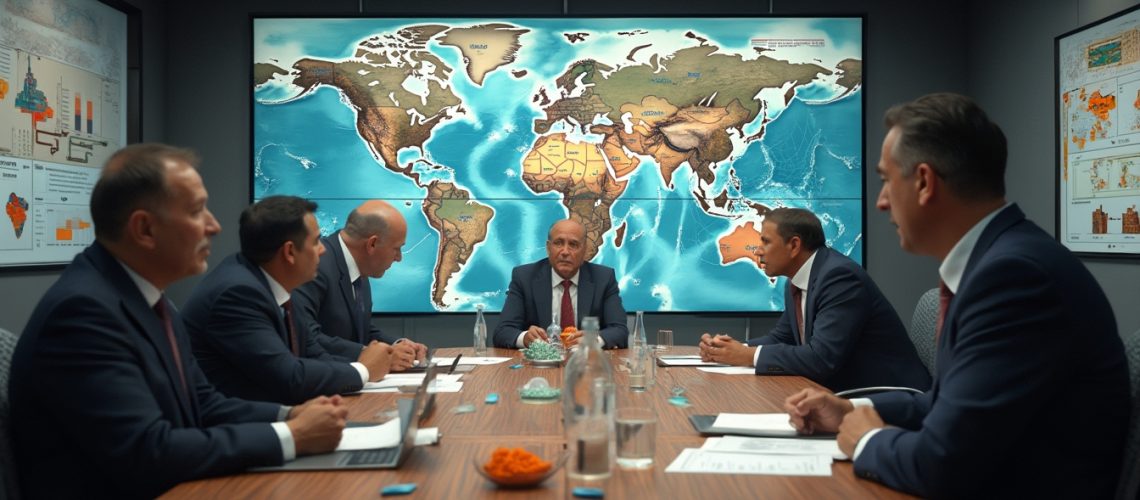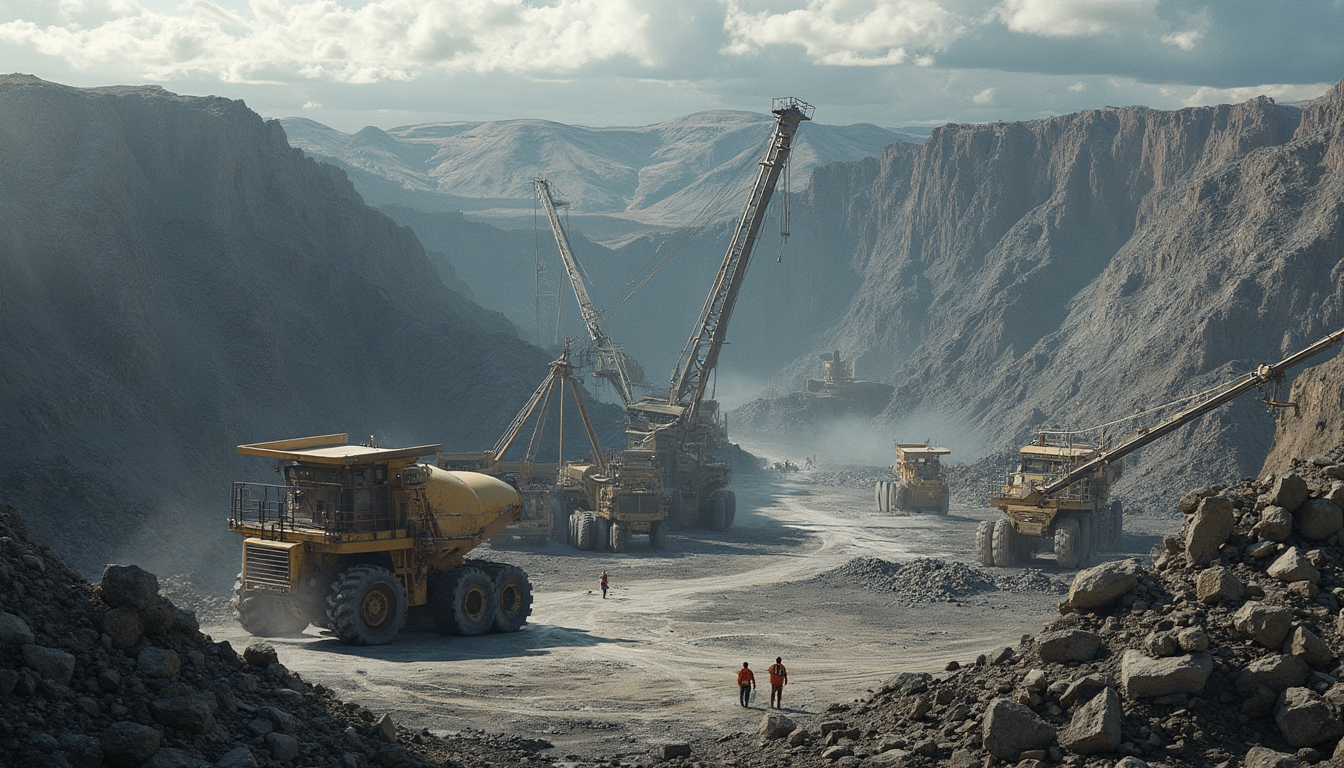Critical mineral supply chains have become a strategic focal point for countries seeking to secure the raw materials essential for advanced technologies, defence initiatives and economic innovation. Australia, the United States and European nations are increasingly realising that their long‐term prosperity depends on robust supply chains, critical minerals, tariffs, podcasts and consistent strategic investment. As global trade becomes ever more complex, debates around policies such as china’s export restrictions further illustrate the need for an in‐depth conversation on the geopolitical implications of these supply chains.
The global market for raw materials is in a state of rapid evolution, with deep interdependencies between production, processing and technological integration. In recent years, significant statistics have highlighted that the United States remains 100% net import reliant for 12 out of 50 critical minerals and depends on imports for over 50% of another 28 minerals. Such reliance underpins the urgent requirement for comprehensive strategies to ensure economic sovereignty. Meanwhile, China not only leads global production – dominating 30 critical minerals – but also controls between 70% and 90% of the related processing industries. This landscape is further complicated by tariff policies, which are increasingly being examined for their potential to reshape international supply dynamics.
How Dependent Are Western Countries on China for Critical Minerals?
Western nations are uniquely vulnerable in this intricate web of international dependencies. In light of China’s strong position in the market, it is essential to understand how economic strategies evolve in response to such dependency. Authoritative research has revealed that China’s strategic control over mineral processing, combined with its market dominance, has made it the indispensable hub for these raw materials. Often, critical policy debates reference unlocking critical minerals potential as a pathway to reduce such overdependence.
To better assess this dynamic, consider the following points:
- A significant portion of the global processing infrastructure is located in China.
- Western countries must often contend with long development timelines when attempting to establish independent operations.
- The reliance on foreign technology and expertise further delays domestic initiatives.
Experts suggest that improving domestic capabilities in supply chains and processing can mitigate the risk, but these changes require both time and substantial capital investment.
What Challenges Do Countries Face in Developing Secure Supply Chains?
Establishing secure and independent mineral supply chains is far from straightforward. The challenges encompass intertwining factors that need synchronized management:
- Capital-intensive project requirements often lead to long delays.
- Technological advancements and infrastructural development remain critical hurdles.
- Competition with heavily subsidised Chinese industrial operations puts additional strains on non‐aligned nations.
- Policy and regulatory frameworks need to be agile enough to support rapid development.
In this context, the need for lithium investments has emerged as a critical trend, emphasising that overcoming these challenges requires innovative financial instruments and new modes of government-industry collaboration. Analysts have noted that national strategies must include detailed plans for exploring, processing and sustaining critical minerals while considering long-term geopolitical and economic outcomes.
Strategic Approaches to Mineral Supply Chain Independence
Achieving independence from volatile international markets requires multifaceted approaches that extend across policy, industry and technological domains. Countries are increasingly focusing on long-term strategic interventions which include:
- Building strategic partnerships with allied nations to facilitate resource sharing.
- Investing in domestic and regional exploration operations to minimise import reliance.
- Implementing targeted industrial policies that foster innovation and local processing capacities.
- Creating long-term incentive structures that encourage responsible exploration and sustainable practices.
Many governments have turned towards,navigating rare earth challenges which enable collaborative approaches in improving domestic supply infrastructures. Additionally, curated podcasts on supply chains provide experts and policymakers with the current trends and emerging opportunities, thereby aiding a broader understanding of the real challenges faced.
The Role of Tariffs in Mineral Supply Chain Strategy
Tariffs have attracted significant debate as potential tools to rebalance global supply chains. Their role can be summarised in several key points:
- Tariffs may protect domestic industries by mitigating the adverse effects of predatory pricing strategies.
- They offer a mechanism to level the competitive landscape in favour of local producers, assisting nations in building internal expertise.
- Through calculated implementation, tariffs can encourage investment in domestic processing facilities.
- They create a platform for more equitable trade negotiations among international partners.
However, while tariffs are a promising instrument, they are accompanied by risks. Among these are the impacts of increased consumer prices, reciprocal trade measures that may destabilise international markets, potential severance of crucial partnerships and unforeseen macroeconomic effects that may ripple across related sectors.
Potential Risks and Mitigation Strategies
Any policy leveraging tariffs in the context of supply chains, critical minerals and clean energy initiatives must consider comprehensive risk management strategies. Key potential risks include:
- Escalation of trade disputes leading to broader geopolitical tensions.
- Increased operational costs for local industries and consumers.
- Disruption of integrated global value chains.
- Strategic vulnerabilities in emergency supply scenarios.
Mitigation requires an integrated approach incorporating:
- Coordinated international policies that guide tariff implementation.
- Investment in domestic production to reduce vulnerability.
- Continuous monitoring of global market fluctuations.
- Strategic diversification of supply sources to avoid single points of failure.
Policymakers must balance the inherent risks and benefits of tariffs to prevent unintended economic shockwaves, an area where research such as addressing mineral shortages becomes crucial.
Key Minerals of Strategic Importance and Their Applications
The critical minerals that underpin advanced technological and defence applications include but are not limited to:
- Rare earth elements: indispensable for modern electronics.
- Graphite: pivotal in battery technology.
- Antimony and gallium: essential components in semiconductor production.
- Germanium: key to fibre optics and infrared technologies.
The diversity of these minerals ensures that they play a role across multiple sectors:
- Advanced defence systems robustly rely on these minerals for next-generation capabilities.
- Semiconductor manufacturing is increasingly dependent on a stable supply of these components.
- The burgeoning electric vehicle industry uses critical minerals to enhance battery performance and drive efficiency.
- Technological innovation in renewable energy is directly linked to the sustainable and secure supply of these resources.
The urgency of securing reliable supply chains has led to a transformative era marked by increased government backing, strategic investments and enhanced regulatory frameworks. This sentiment is echoed in various industry podcasts, where detailed interviews with mining executives and trade experts highlight the necessity of critical minerals podcasts to stay abreast of market dynamics.
Future Outlook: A Decade of Transformation Ahead
Moving forward, the transformation of mineral supply chains is expected to unfold over the next 10-15 years. There are several factors that will determine the success of these strategic endeavours:
- Consistent long-term investments are vital to support technological innovation and infrastructure expansion.
- International geopolitical cooperation will ease tensions and foster collaborative development.
- Stable policy environments and adaptable regulatory regimes will allow for swift responses to global market shifts.
- Increased domestic processing capacities are a key indicator of success, representing a tangible reduction in dependency risks.
The journey is undeniably complex, requiring coordination among multiple sectors and nations. Yet, the strategic use of tariffs as policy tools and the integration of robust communication channels such as industry podcasts will help maintain focus and momentum throughout this process. It is clear that ensuring the resilience of supply chains and the sustainable development of critical minerals is not simply an economic necessity, but a matter of national security and global stability.
In summary, critical mineral supply chains play a pivotal role in shaping international trade, industry innovation and geopolitical stability. With increased focus on unlocking domestic potential, managing tariff policies and leveraging expert discussions through podcasts, nations are evolving their strategies to secure a more isolated and robust resource environment. The path ahead demands not only fiscal investment and technological breakthroughs but also a conscientious effort to balance global interdependencies in an ever‐changing world.
Ready to Stay Ahead in the Critical Minerals Market?
Discover real-time insights and strategic opportunities with Discovery Alert's AI-powered notifications, designed to simplify the complex world of critical mineral investing and exploration. Start your 30-day free trial today and gain a competitive edge in understanding global mineral supply chain dynamics.







